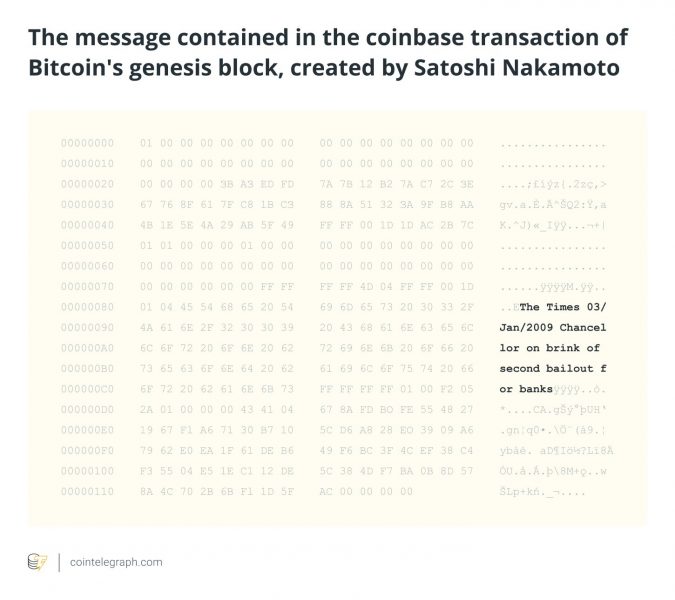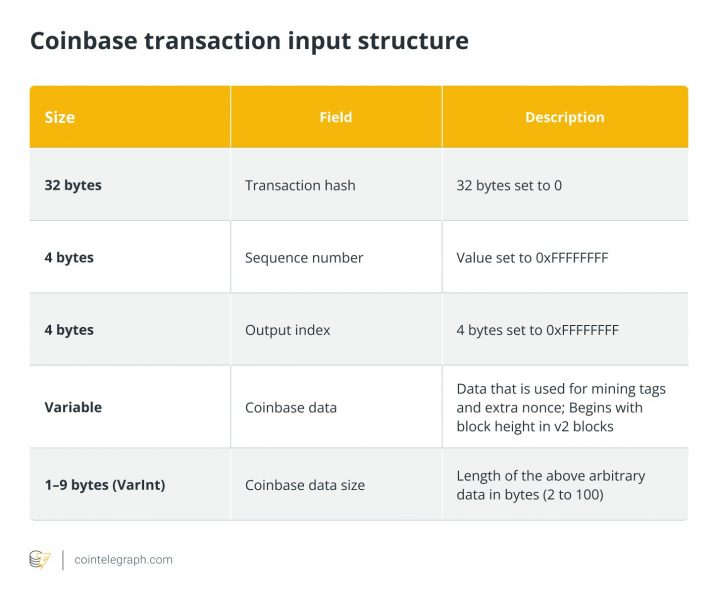What are coinbase transactions
Not to be confused with the cryptocurrency exchange Coinbase, the term “coinbase transaction” refers to a particular type of transaction that occurs in every new block of a blockchain.
Coinbase transactions are a key part of the system that blockchains utilize to introduce new currencies that have never been sent into circulation. The first coinbase transaction was generated by Bitcoin’s (BTC) pseudonymous creator, Satoshi Nakamoto, while mining the first genesis block. The coinbase was reportedly paid to the Bitcoin address “1A1zP1eP5QGefi2DMPTfTL5SLmv7DivfNa” with a value of 50 BTC.
One of the biggest curiosities of the Bitcoin blockchain is that the said block was never confirmed on the blockchain — something that has puzzled many blockchain scientists and developers.
One theory is that this occurred because the first-ever coinbase transaction was encoded in the genesis block’s source code. And because the entire blockchain is built on this genesis block, the concept of confirmation was not applied to it.
Another theory suggests that Nakamoto designed it this way since, if the genesis block were to get unconfirmed for any reason, it would cause a new blockchain to be built, making the original blockchain obsolete.
The coinbase transaction is also used to reward miners for maintaining the blockchain. They are paid a certain amount of coins for each block they mine. This rewards system creates an incentive for miners and helps keep the blockchain secure by deterring malicious behaviors that could destabilize the network.






